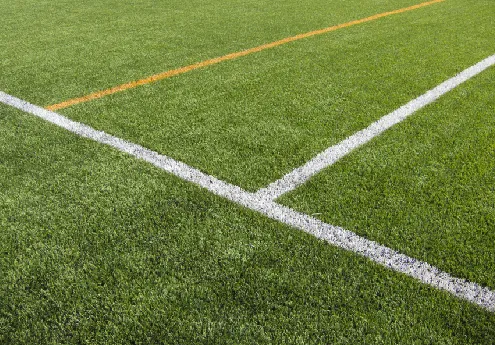
- Afrikaans
- Arabic
- Belarusian
- Bengali
- Czech
- Danish
- Dutch
- English
- Esperanto
- Estonian
- Finnish
- French
- German
- Greek
- Hindi
- Hungarian
- Icelandic
- Indonesian
- irish
- Italian
- Japanese
- kazakh
- Rwandese
- Korean
- Kyrgyz
- Lao
- Latin
- Latvian
- Malay
- Mongolian
- Myanmar
- Norwegian
- Persian
- Polish
- Portuguese
- Romanian
- Russian
- Serbian
- Spanish
- Swedish
- Tagalog
- Tajik
- Thai
- Turkish
- Turkmen
- Ukrainian
- Urdu
- Uighur
- Uzbek
- Vietnamese
Installing Grass on Concrete Surfaces for a Lush Green Look
Oct . 17, 2024 10:22 Back to list
Laying Turf on Concrete Tips and Techniques for a Lush Green Lawn
Transforming a concrete surface into a lush, green lawn may seem like an impossible task at first glance. However, with the right approach and materials, you can successfully lay turf on concrete and enjoy the benefits of a beautiful garden. This guide will provide you with essential tips and techniques for achieving a successful installation of turf on a concrete base.
Understanding the Challenges
Before we delve into the steps for laying turf on concrete, it's important to understand the challenges associated with this project. Concrete is a hard, non-porous surface that does not allow for drainage or root penetration. As a result, simply laying turf directly on concrete may lead to poor growth, water retention issues, and ultimately, a failed lawn.
Preparing the Concrete Surface
1. Clean the Area Begin by thoroughly cleaning the concrete surface. Remove all dirt, debris, and any existing plants. A pressure washer may be useful for this step, ensuring that the surface is free of contaminants that could hinder the growth of the turf.
2. Inspect for Cracks Check the concrete for any visible cracks or damage. These should be repaired prior to laying turf, as they could lead to drainage issues or create an uneven surface.
3. Consider Drainage Solutions Since concrete does not allow for drainage, it is essential to implement a proper drainage system. You can achieve this by creating drainage holes or using a drainage layer beneath the turf. This will help excess water to escape and prevent waterlogging.
Creating a Base for the Turf
1. Add a Layer of Substrate To provide a suitable growing medium for the turf, apply a layer of soil or a specialized artificial turf infill material on top of the concrete. Aim for a depth of at least 2 to 4 inches. This substrate will act as the foundation for your turf, allowing roots to take hold and access nutrients.
2. Level the Surface Ensure the substrate is evenly spread across the area. Use a rake to level the surface, removing any lumps or uneven spots. A smooth base will help the turf lay flat and prevent any future issues with uneven growth.
3. Water the Base Before laying the turf, lightly water the substrate. This will help it settle and provide moisture for the new turf.
laying turf on concrete

Laying the Turf
1. Choose the Right Turf Opt for a turf variety that is suited for your climate and intended use. Certain types, like Zoysia or Bermuda, are known for thriving on unconventional surfaces and can adapt better to the concrete substrate.
2. Laying the Rolls Begin laying the turf rolls from one end of the area to the other, staggering the seams like bricks for a more natural appearance. Make sure the edges of each roll are closely aligned, and avoid overlapping them.
3. Cutting the Turf Use a sharp utility knife to trim any excess turf around edges, curves, or obstacles such as garden beds or walkways. This will create a clean and professional finish.
4. Secure the Turf As you lay each section of turf, use landscape staples or pins to secure it to the substrate. This will prevent the turf from shifting or lifting, especially during watering or heavy rain.
Maintenance After Installation
1. Watering Water the newly laid turf immediately after installation and continue to keep the area damp for the first few weeks. Gradually reduce the frequency as the turf establishes itself.
2. Fertilizing Consider applying a starter fertilizer specifically designed for newly laid sod. This will help the grass to develop strong roots and encourage healthy growth.
3. Mowing After a few weeks, when the grass has established roots, you can begin mowing. Make sure to keep the mower blades high initially, allowing the grass to grow strong without being cut too short.
Conclusion
Laying turf on concrete may seem daunting, but with careful preparation and proper techniques, you can create a vibrant lawn in a previously barren space. By understanding the challenges, preparing the surface, creating an appropriate base, and following through with maintenance, your turf can thrive even on concrete. Embrace your gardening project, and soon enough, you will enjoy the beauty and comfort of a lush green lawn.
-
The Benefits of Artificial Turf for Indoors
NewsJul.15,2025
-
How Artificial Grass Suppliers Ensure Quality Products
NewsJul.15,2025
-
Artificial Grass and Pets: A Space for Relaxation
NewsJul.08,2025
-
Balcony & Outdoor Decoration with Artificial Grass
NewsJul.08,2025
-
Best Indoor Artificial Grass for Home
NewsJul.07,2025
-
Best Pet Turf for Dogs: Safe & Durable Artificial Grass Options
NewsJul.07,2025
Products categories









